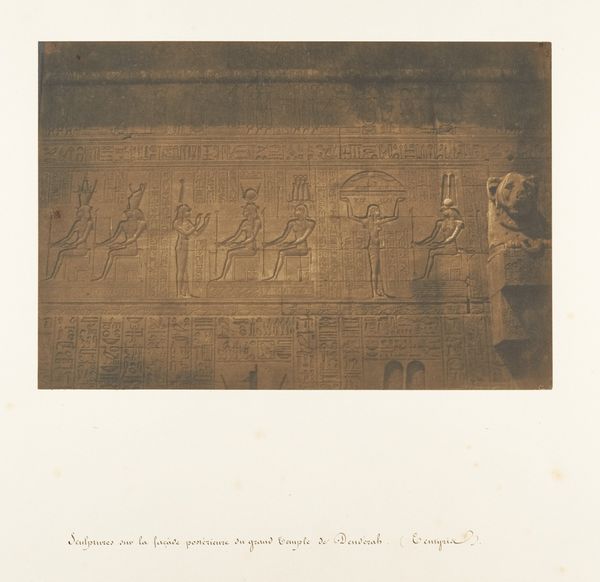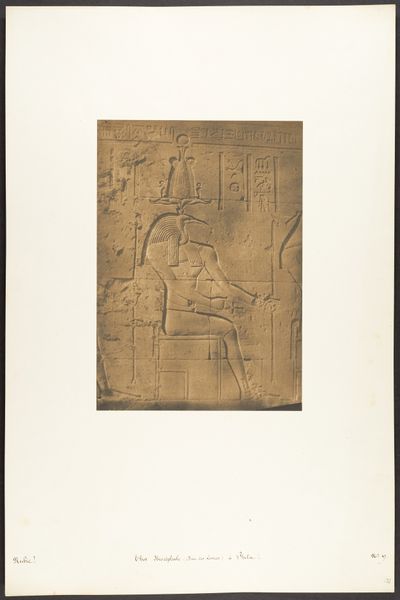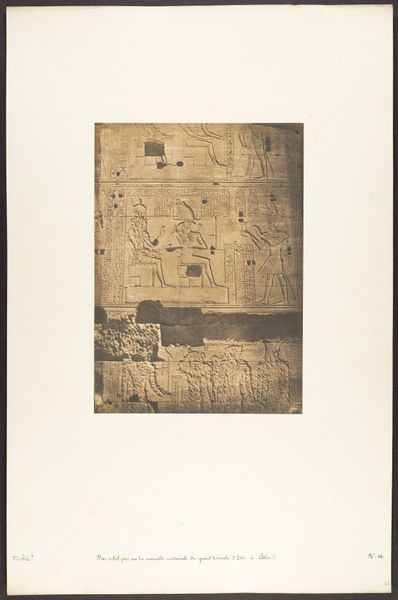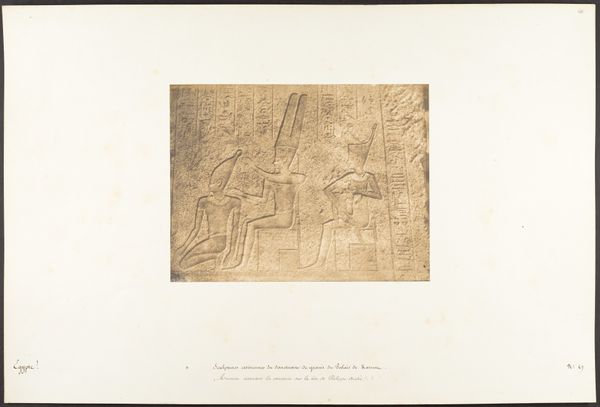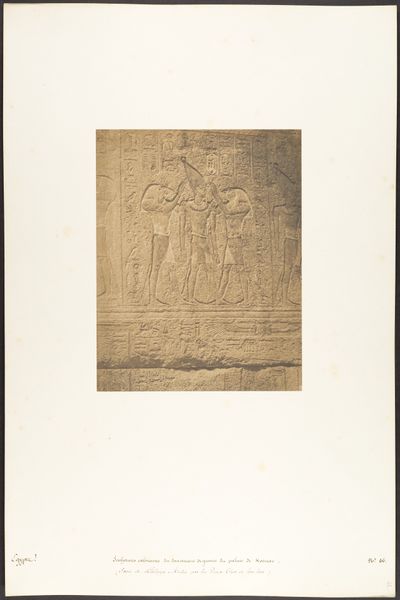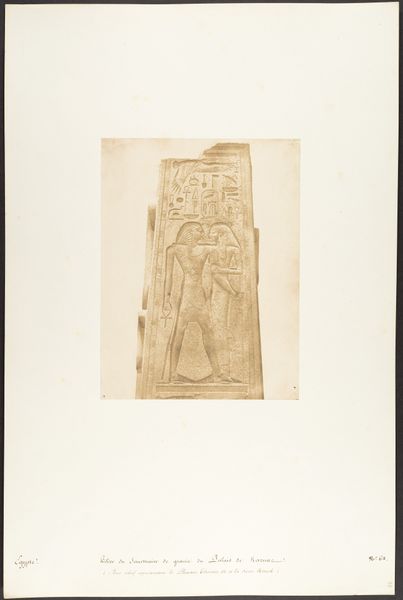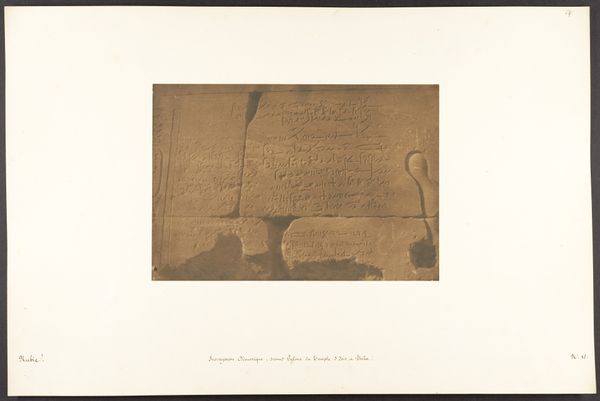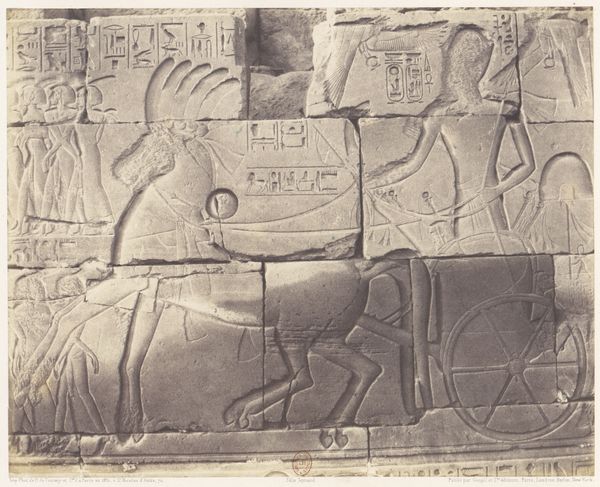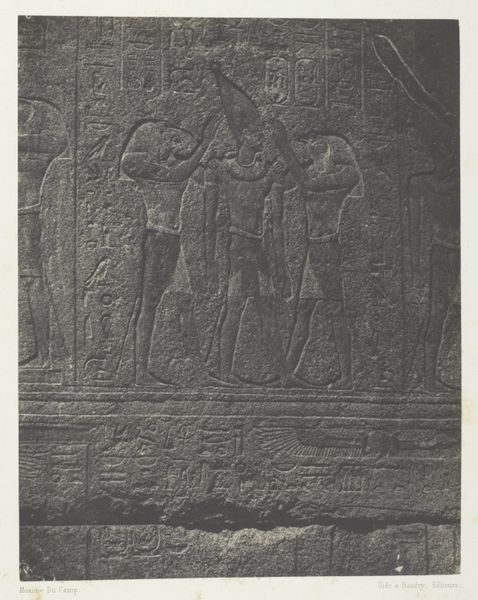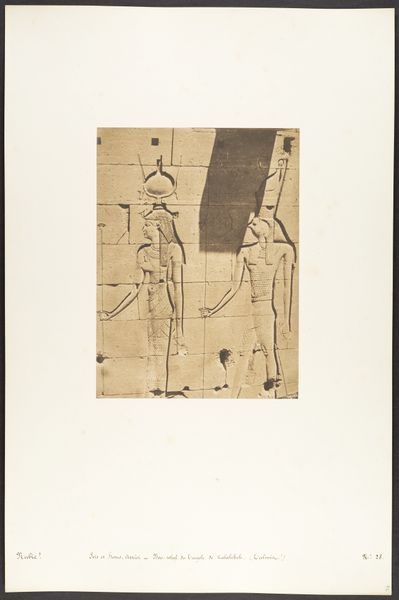
Bas-reliefs de la façade du Temple de Dendérah (Tentyris) 1849 - 1850
0:00
0:00
relief, photography, gelatin-silver-print, architecture
#
relief
#
landscape
#
ancient-egyptian-art
#
photography
#
ancient-mediterranean
#
gelatin-silver-print
#
architecture
Dimensions: Image: 6 1/8 × 8 9/16 in. (15.5 × 21.8 cm) Mount: 12 5/16 × 18 11/16 in. (31.2 × 47.5 cm)
Copyright: Public Domain
This photograph captures the bas-reliefs on the facade of the Temple of Dendera, and was taken by Maxime Du Camp, in the mid-19th century. Du Camp used the calotype process, an early photographic technique that created a paper negative, allowing for multiple prints. This process, compared to others, was notable for its relative simplicity. The surface has a soft, almost hazy quality, which emphasizes the contrast between the intricately carved stone and the stark Egyptian sunlight. The original reliefs at the temple are themselves products of laborious carving. Stone was quarried, transported, and then carefully sculpted by skilled artisans. Du Camp's photograph speaks to another kind of labor. This image was part of a project commissioned to document monuments and sites in Egypt, making them accessible to a European audience, thus serving both scientific and colonial interests. Du Camp's choice of the calotype process, with its reproducible prints, allowed for mass dissemination of these images. This reflects the shift towards more standardized and scalable methods of cultural documentation in the 19th century, in contrast to the older methods, like engravings. It's important to recognize how materials, making, and context shaped the meaning and reception of artworks like this one.
Comments
No comments
Be the first to comment and join the conversation on the ultimate creative platform.
